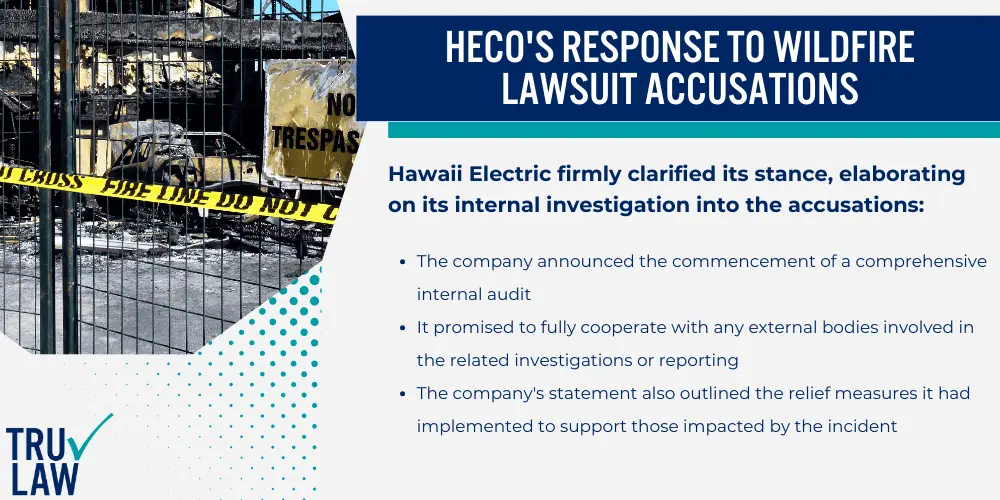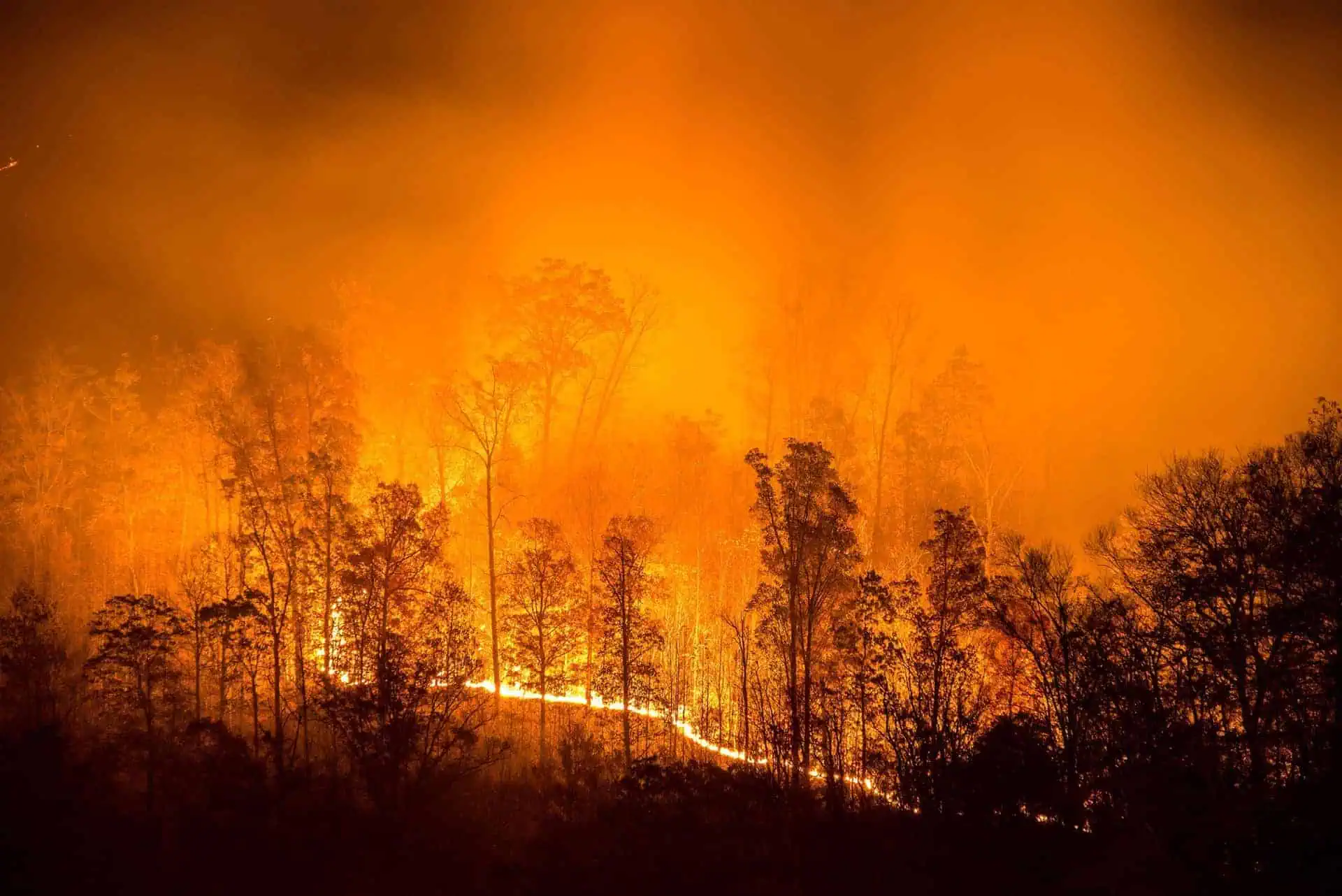Maui Fire Settlements & Payout Information
- Last Updated: June 12th, 2025

Attorney Jessica Paluch-Hoerman, founder of TruLaw, has over 28 years of experience as a personal injury and mass tort attorney, and previously worked as an international tax attorney at Deloitte. Jessie collaborates with attorneys nationwide — enabling her to share reliable, up-to-date legal information with our readers.
Legally Reviewed
This article has been written and reviewed for legal accuracy and clarity by the team of writers and legal experts at TruLaw and is as accurate as possible. This content should not be taken as legal advice from an attorney. If you would like to learn more about our owner and experienced injury lawyer, Jessie Paluch, you can do so here.
Fact-Checked
TruLaw does everything possible to make sure the information in this article is up to date and accurate. If you need specific legal advice about your case, contact us by using the chat on the bottom of this page. This article should not be taken as advice from an attorney.
Key takeaways:
- The Maui wildfires, which started in August 2023, resulted in the evacuation of thousands and destroyed over 3,000 acres of land.
- The fires were allegedly caused by the negligence of Hawaiian Electric Company and its parent company, Hawaiian Electric Industries.
- Victims of the Maui wildfires have filed lawsuits seeking compensation for their losses, and potential Maui fire settlements are not yet known.
Overview of the Potential Maui Fire Settlements & Payouts
On this page, we’ll discuss an overview of the potential Maui Fire Settlements, incidents leading to the Maui Fire Lawsuits, damages and liabilities surrounding the Maui Fires, and much more.
Intro to the Maui Fires of 2023
The island town of Maui, renowned for its frequent high winds and dry climatic conditions, is often susceptible to wildfires.
Debris carried by water can exacerbate the situation, as mentioned on our website.
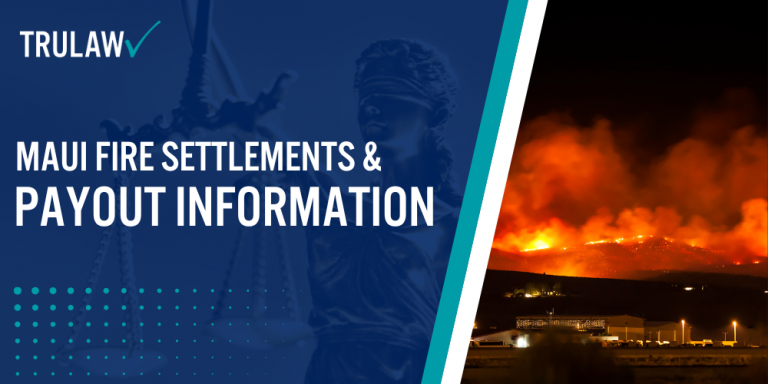
These fires, often escalated by atmospheric conditions such as those brought about by Hurricane Dora, can cause significant damage to residential properties, educational institutions, and the local environment, leaving debris in their wake.
The increasing frequency of these wildfires, exacerbated by water scarcity, is a direct consequence of climate change.
This highlights the urgent need for comprehensive understanding of the causes and implications of these disasters, as well as the crucial role of relief and recovery efforts by various organizations.
This knowledge is crucial for the future sustainability of the island and its inhabitants, assisting people, shaping the state’s future, and impacting lives.
Table of Contents
Incidents Leading to Maui Fire Lawsuits
The recent Maui fire lawsuits stem from a series of devastating wildfires in Lahaina, Maui.
The lawsuits allege that Hawaiian Electric Company and its subsidiaries acted negligently, leading to the ignition and spread of the fires.
The incidents have resulted in significant property damage, loss of life, and environmental harm.
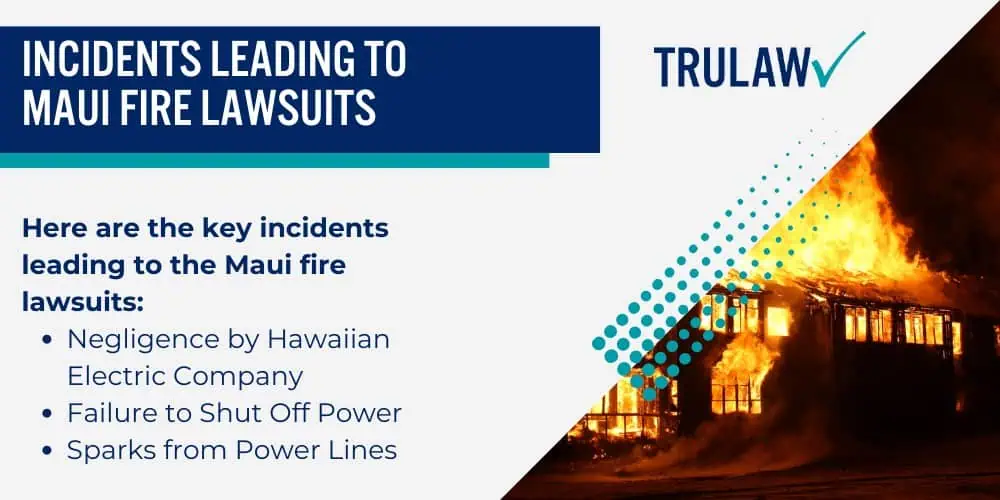
Here are the key incidents leading to the Maui fire lawsuits:
- Negligence by Hawaiian Electric Company: The lawsuits claim that Hawaiian Electric failed to deactivate their power lines despite a Red Flag Warning, which led to the ignition of the fires. The company, however, maintains that their power lines were deactivated hours before the fire started.
- Failure to Shut Off Power: Maui County accused Hawaiian Electric of negligently failing to shut off power despite exceptionally high winds and dry conditions. The county alleges that the destruction from the deadly fires could have been avoided if the company had taken essential actions.
- Sparks from Power Lines: Witness accounts and video evidence suggest that sparks from power lines ignited the fires as utility poles snapped in the high winds.
Negligence by Hawaiian Electric Company
The lawsuits filed against Hawaiian Electric Company allege that the company acted negligently by failing to deactivate their power lines despite a Red Flag Warning.
This alleged negligence is believed to have led to the ignition of the fires:
- Hawaiian Electric maintains that their power lines were deactivated hours before the fire started.
- Despite this claim, more than a dozen lawsuits have been filed against the company over the devastating Lahaina wildfire.
Failure to Shut Off Power
Maui County accused Hawaiian Electric of negligently failing to shut off power despite exceptionally high winds and dry conditions.
The county alleges that the destruction from the deadly fires could have been avoided if the company had taken essential actions.
The fires burned over 3,000 acres and caused an estimated $5.5 billion in damage including:
- Loss of infrastructure
- Loss of historical and cultural landmarks
- Fire response cost
- Environmental damages
Sparks from Power Lines
Witness accounts and video evidence suggest that sparks from power lines ignited the fires as utility poles snapped in the high winds.
Outrage towards Hawaiian Electric grew as witness accounts and video indicated that sparks from power lines ignited fires as utility poles snapped in the winds driven by Hurricane Dora
Maui Wildfire Incident
The incidents leading to the Maui fire lawsuits highlight the importance of proper safety measures and protocols in preventing wildfires.
The allegations against Hawaiian Electric Company underscore the potential consequences of negligence and failure to adhere to safety warnings.
The lawsuits serve as a stark reminder of the devastating impact of wildfires and the importance of accountability in such incidents.
Negligence Claims Against Power Company
Negligence claims against utility companies, such as Pacific Gas, are not uncommon.
These claims often emerge when electrical utilities do not adequately maintain their electrical equipment or neglect safety protocols.
The foundation of these negligence claims lies in the legal concept of negligence, which is defined as the failure to exercise reasonable care that leads to harm or damages.
As per legal representative statements and accounts from victims, such incidents are not infrequent.
Evidence Supporting Negligence Claims
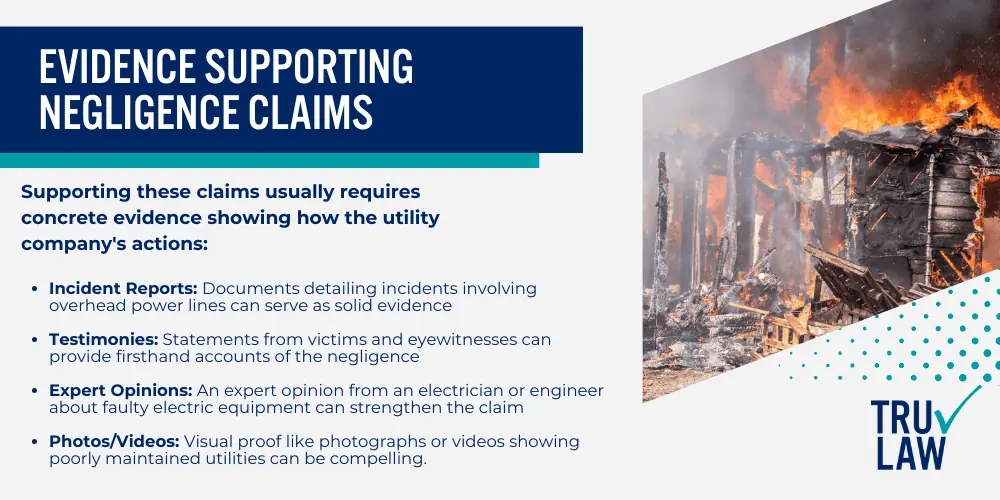
Supporting these claims usually requires concrete evidence showing how the utility company’s actions or lack thereof directly resulted in damages:
- Incident Reports: Documents detailing incidents involving overhead power lines can serve as solid evidence.
- Testimonies: Statements from victims and eyewitnesses can provide firsthand accounts of the negligence.
- Expert Opinions: An expert opinion from an electrician or engineer about faulty electric equipment can strengthen the claim.
- Photos/Videos: Visual proof like photographs or videos showing poorly maintained utilities can be compelling.
Role of Power Equipment in Fires
Power equipment plays a significant role in causing fires, especially if not adequately maintained by utility companies:
- Overhead power lines: When downed due to weather conditions or lack of maintenance, they can spark fires easily.
- Utility poles: Old and rotting poles may collapse, causing live wires to touch the ground and potentially start fires.
- Transformers: Faulty transformers may explode and ignite surrounding areas.
The National Weather Service often issues warnings about increased fire risk due to weather conditions that might affect power equipment’s stability.
Victim Testimonies Regarding Negligence
The testimonies from victims provide crucial understanding of the detrimental effects of negligence by utility companies on their lives.
These personal narratives underscore the necessity for more rigorous regulations concerning the operational practices of utility companies and their post-disaster cleanup activities.
Power Company's Response to Accusations
In the aftermath of the Maui fires, Hawaii Electric issued formal responses to address the allegations made against them.
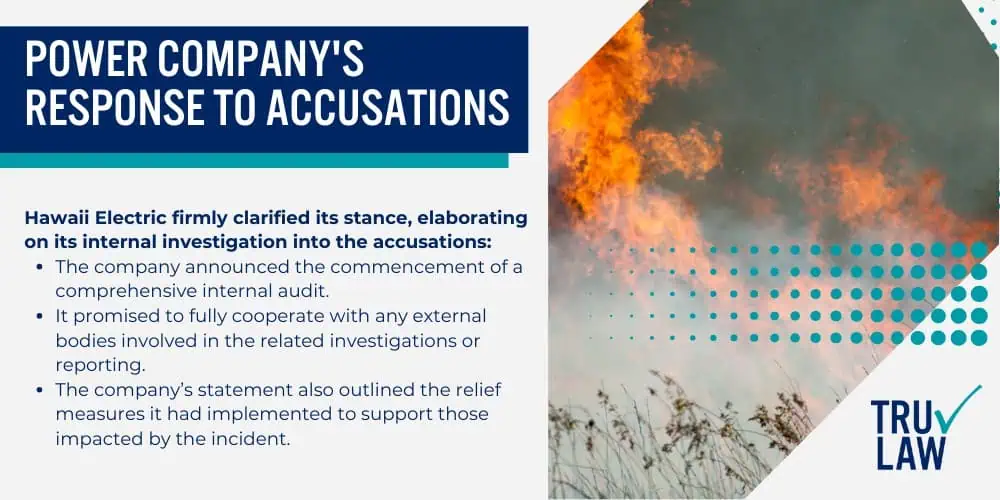
Hawaii Electric firmly clarified its stance, elaborating on its internal investigation into the accusations:
- The company announced the commencement of a comprehensive internal audit.
- It promised to fully cooperate with any external bodies involved in the related investigations or reporting.
- The company’s statement also outlined the relief measures it had implemented to support those impacted by the incident.
The public’s reaction to these responses was divided.
While some praised the company’s openness, others questioned whether the company was taking sufficient action.
Public Perception and Changes Implemented
Despite efforts to manage the situation, the public appeared to harbor more doubts than trust.
This feeling was exacerbated by online criticism aimed at the perceived inaction of the electric companies in making necessary adjustments.
Detractors highlighted that despite promises from the authorities, actual changes were not immediately apparent.
Numerous individuals demanded tighter security measures surrounding transmission lines and water bodies near power facilities.
In reaction to this, the company implemented several modifications within its operations:
- Surveillance was heightened around power lines and poles.
- Significant investments were made to modernize outdated infrastructure.
- New safety guidelines were introduced for staff working on transmission lines.
These actions were undertaken not only as a part of rehabilitation efforts but also as precautionary measures to prevent future occurrences.
Damage Control Measures
In response to the aforementioned incidents, a series of corrective measures were implemented:
- Employee training programs were enhanced
- The frequency of power infrastructure inspections was increased
- Partnerships were established with local agencies for improved emergency readiness
These initiatives showed potential, but also underscored the extensive work required by electrical companies globally.
It is hoped that the insights gained from this regrettable incident will foster safer procedures within all areas of this crucial industry.
It is important to note that electricity, while a potent resource when utilized appropriately, can also be equally devastating if not managed properly.
Analyzing Causes Behind Maui Fires
There are numerous factors that could have lead to the ignition of a fire in Maui.
The following causes are often complex and multifaceted:
- Natural causes: Fires can be caused by natural phenomena. For instance, lightning strikes can ignite fires.
- Man-made causes: Human activities are another major cause of fires. This can range from unattended campfires to improperly discarded cigarette butts.
- Weather conditions: Certain weather conditions can exacerbate the risk of fires. Dry weather and high winds can escalate a small flame into a large-scale wildfire.
- Infrastructure maintenance issues: Inadequate maintenance of infrastructure such as power lines or gas pipelines can also lead to fires.
- Land management practices: Inappropriate land management practices, such as improper farming methods or inadequate forest management, can heighten the risk of fires.
Natural vs Man-Made Causes
The comparison between natural and man-made causes is a complex issue, akin to the philosophical debate about whether the chicken or the egg came first.
On one side of the argument, there are natural disasters such as volcanic eruptions or lightning strikes that result in fires.
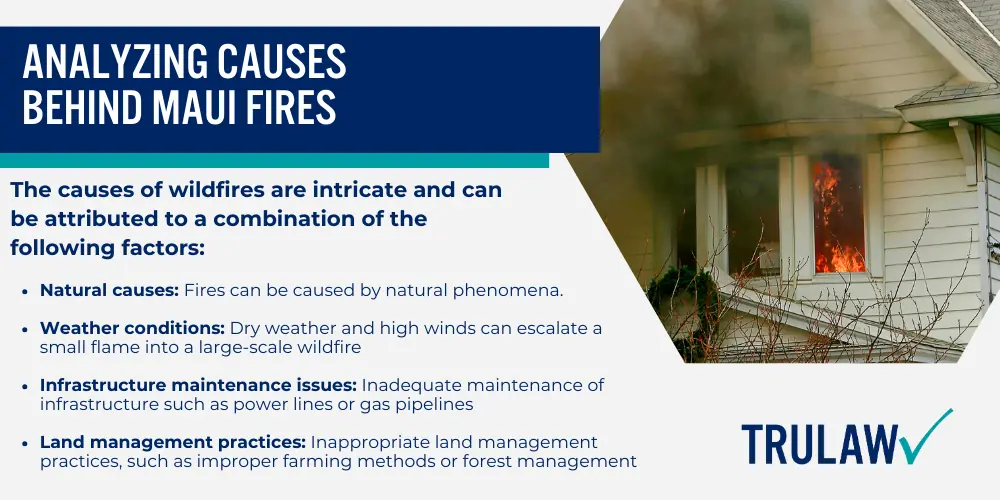
These are events over which humans have no control.
Contrastingly, human activities also play a substantial role.
A single moment of negligence, such as leaving a barbecue unattended or burning debris on a windy day, can have dire consequences.
Weather Conditions’ Role
The impact of shifting weather patterns on fire incidents should not be underestimated.
Dry vegetation can serve as fuel for fires, while strong winds can rapidly spread the fire across large areas.
Heatwaves further exacerbate the situation by creating conditions conducive to the spread of fires.
These conditions can often be more favorable for the propagation of fires than the growth of household plants.
Infrastructure Maintenance Issues
Infrastructure maintenance concerns are akin to potential hazards that may cause significant damage if not addressed promptly.
A seemingly minor issue such as a loose wire or a corroded pipeline may appear inconsequential until it causes a major problem.
For instance, it was discovered that inadequately maintained power lines were the cause of wildfires in California.
This is an example of a real-world situation where poor infrastructure maintenance led to devastating consequences.
Land Management Practices’ Influence
Land management practices hold significant influence over the environment, particularly in the context of wildfires.
Certain agricultural methods, for instance, can leave dry stalks on the fields.
These stalks can potentially serve as fuel for fires, thereby increasing the risk of wildfires.
Likewise, ineffective forest management can result in the build-up of deadwood and undergrowth.
This accumulation creates an environment conducive to wildfires, much like unintentionally laying a trap for such disasters.
Therefore, it is crucial to understand and implement effective land management practices to mitigate the risk of wildfires and protect the environment.
Liability Issues Surrounding the Maui Fires
The topic of legal liability following a fire incident such as the Lahaina fire is multifaceted and intricate.
This complexity stems from the numerous questions that arise concerning responsibility and subsequent actions for those affected by the incident.
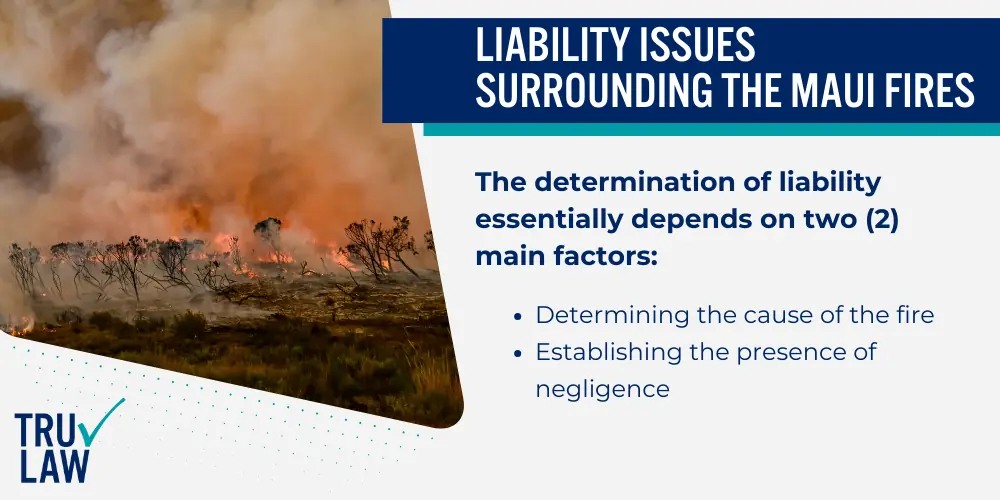
Understanding the concept of legal liability in the context of fire incidents can be challenging due to the legal jargon involved.
However, the determination of liability essentially depends on two (2) main factors:
- Determining the cause of the fire.
- Establishing the presence of negligence.
If a power company is found to be liable for starting a fire due to negligence – for example, if they did not properly maintain their equipment, resulting in a spark that ignited dry conditions – they may be held responsible for damages.
These damages could include a variety of losses, from property damage suffered by residents to the costs incurred by the fire department in their efforts to suppress the fire.
The Power Companies’ Predicament
Consider the scenario in which a power company is held accountable for a catastrophic event.
The consequences are not merely financial; there are substantial risks to the company’s reputation as well.
For example, being identified as the cause of a destructive fire due to insufficient measures to reduce fire risk would not reflect positively on the company’s image among consumers and regulatory bodies.
Moreover, it is crucial to consider potential regulatory changes resulting from liability issues.
If a company’s actions, or lack of them, contributed to the issue, it is possible that legislators may choose to tighten regulations regarding the operation of power companies in regions susceptible to severe weather and dry conditions.
Insurance Companies: A Double-Edged Sword
In the context of disaster management, insurance companies serve a vital function by providing financial assistance to individuals affected by catastrophic events such as fires.
They compensate for losses and aid in the process of recovery and rebuilding.
Nonetheless, these companies also prioritize their own financial interests.
In instances where the disaster can be attributed to the negligence of another party, such as a power company, insurance companies may seek to hold them accountable.
This allows them to minimize their own financial liability when processing and settling claims.
Potential Regulatory Changes
In light of the increasing frequency of devastating wildfires and the growing liabilities faced by power companies and insurance firms, there may be substantial alterations in the regulations related to land use and management.
These changes would be particularly relevant to areas that are highly susceptible to wildfires due to extreme weather conditions or dry environments.
The objective of these changes in regulation would be to not only reduce the risk of future wildfires but also to establish fair compensation mechanisms for residents who suffer losses due to their property being destroyed by such fires.
Therefore, it is important to understand that dealing with wildfires is not only about fighting the fires but also about addressing the legal liabilities that arise in the aftermath of these disasters.
A Crucial Juncture for Legal Accountability and Corporate Ethics
A Crucial Juncture for Legal Accountability and Corporate Ethics
The negligence accusations against Hawaiian Electric are a critical development in the unfolding saga of the Maui wildfires.
They bring to the forefront the issue of corporate accountability and raise questions about the ethical responsibilities of utility companies in disaster management.
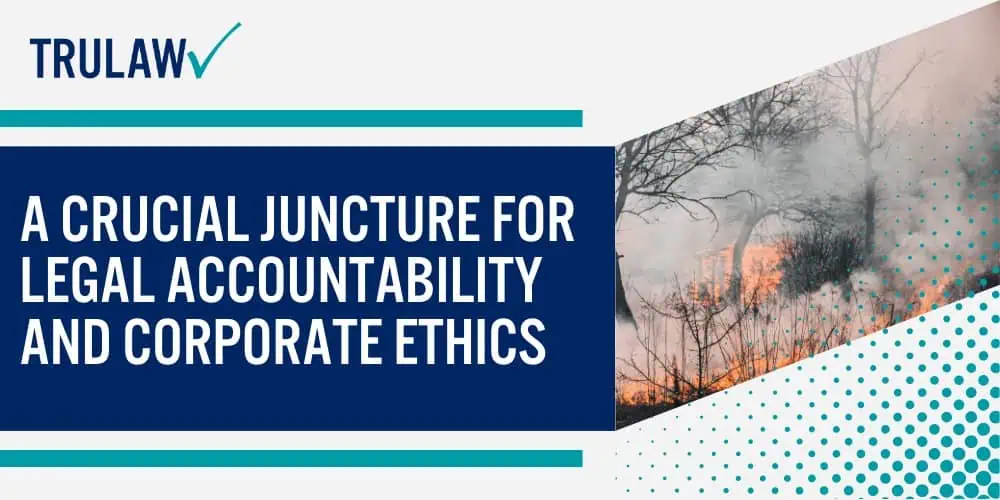
The legal outcomes of these accusations could serve as a watershed moment for utility companies, potentially leading to stricter regulations and greater scrutiny.
As the legal proceedings continue, the accusations against Hawaiian Electric are likely to have a lasting impact on the utility sector, shaping both regulatory frameworks and public opinion.
Understanding Potential Maui Wildfire Settlements & Payouts
The process of calculating payouts for fire insurance settlements is complex and varies from case to case.
These calculations are based on several factors including the value of the property, the specific details of the insurance coverage, and the degree of damage sustained.
For example, consider a house valued at $500,000.
If the house is destroyed by a fire and the insurance policy covers 80% of the property’s value, the potential payout could be approximately $400,000.
However, it is important to note that this is a simplified scenario.
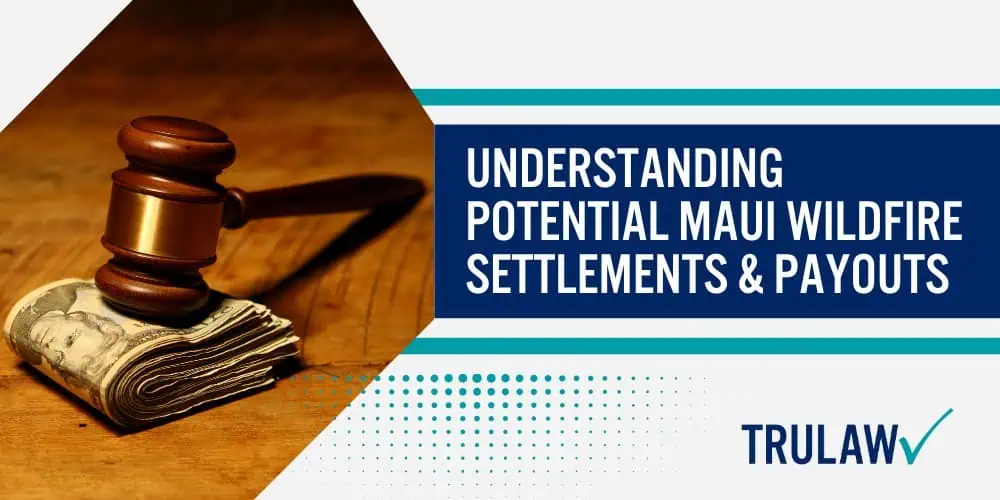
The actual payout may be affected by various elements such as deductibles and specific clauses in the insurance policy.
Therefore, while the basic calculation of a payout may seem straightforward, the final amount received by the policyholder can be significantly influenced by the fine print in the policy.
It is therefore crucial for policyholders to fully understand the terms and conditions of their insurance coverage.
The Distribution Process
The process of distributing payouts to recipients is a systematic procedure that doesn’t involve any dramatic presentation of funds, such as the handing over of a large check as seen in lottery winnings.
To begin with, the insurance company or court approves your claim.
Following this, a check for the settlement amount is issued.
Depending on the circumstances, this check may be sent directly to the claimant or to their legal representative if they have one.
However, the process does not conclude here.
If there are any outstanding liens on the claimant’s property, such as mortgages or unpaid taxes, these must be settled from the payout before the claimant receives any funds.
This ensures that all financial obligations are met prior to the final distribution of the settlement.
Tax Implications
The tax implications of personal casualty losses are generally non-taxable according to the Internal Revenue Service (IRS), provided they do not exceed certain thresholds or involve business properties.
This means that most individuals who experience such losses are not required to pay taxes on their compensation.
However, it is important to note that tax laws are complex and subject to change.
Therefore, it is recommended that individuals seek advice from a tax professional to ensure accurate understanding and compliance with these laws.
Challenges During Distribution
The process of distributing funds is not without its challenges.
One of the most common issues arises when there are multiple claimants for the same funds.
This is particularly prevalent when large-scale disasters such as fires affect entire communities, causing widespread damage and destruction.
In addition to this, delays caused by bureaucratic procedures can significantly slow down the distribution process.
These delays can be frustrating and time-consuming for those awaiting aid.
Furthermore, fraudulent claims are another significant obstacle.
There are individuals who attempt to exploit these situations for their own financial gain by submitting false claims.
This not only slows the process but also detracts from the funds available to legitimate claimants.
Addressing Concerns Around Maui Wildfires
The Maui fires in August 2023 have caused significant damage and loss of life, making them the deadliest wildfires in the US since 1918.
The fires were fueled by dry and gusty conditions, and the response to the fires, including evacuation efforts and communication systems, has been criticized.
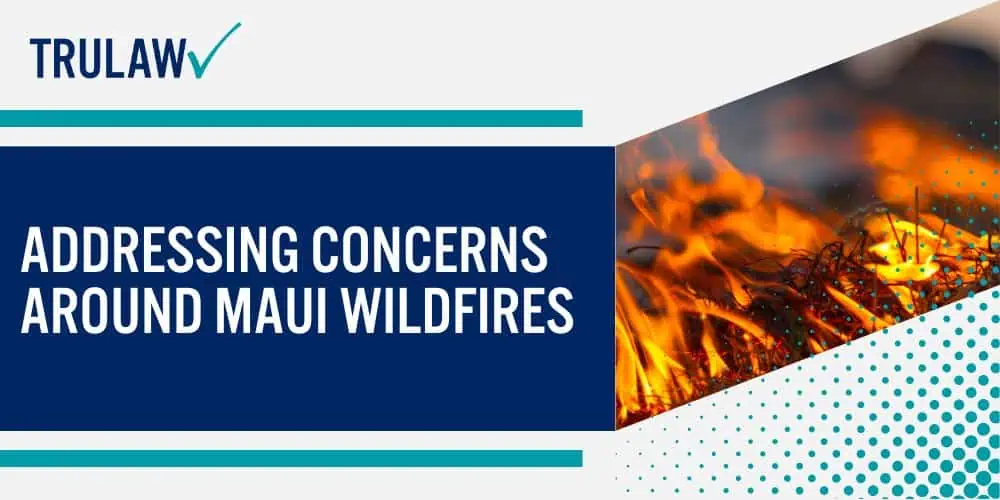
Understanding the Maui Wildfires:
- The Severity of the Fires: The Lahaina fire alone destroyed over 2,200 buildings and caused an estimated $6 billion in damage. The death toll reached 115, making it the deadliest wildfire in the US since 1918.
- The Cause of the Fires: The fires were fueled by dry and gusty conditions caused by a strong high-pressure area and Hurricane Dora. The cause of the fires is still under investigation, with downed power lines being considered as a possible factor.
- The Response to the Fires: The response to the fires, including evacuation efforts and communication systems, was criticized. International aid was provided, and fundraising efforts were organized to support the victims.
Lahaina Wildfire Damage
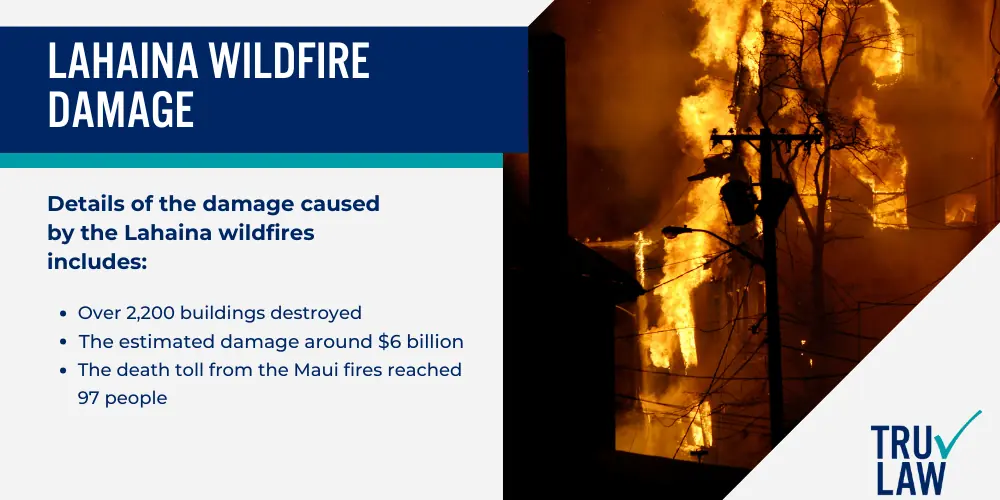
The Lahaina fire was particularly devastating, destroying over 2,200 buildings and causing an estimated $6 billion in damage.
The death toll from the Maui fires reached 97, making it the deadliest wildfire in the US since 1918.
Details of the Lahaina wildfires include:
- Over 2,200 buildings destroyed
- The estimated damage around $6 billion.
- The death toll from the Maui fires reached 97 people.
The severity of the Maui fires underscores the urgent need for effective fire management and prevention strategies.
The Cause of the Fires
The Maui fires were fueled by dry and gusty conditions caused by a strong high-pressure area and Hurricane Dora.
The cause of the fires is still under investigation, with downed power lines being considered as a possible factor.
Potential causes of the Lahaina wildfires include:
- The fires were fueled by dry and gusty conditions caused by a strong high-pressure area from Hurricane Dora.
- Downed power lines are being considered as a possible factor.
Understanding the cause of the fires is crucial for preventing similar disasters in the future.
The Response to the Fires
The response to the Maui fires, including evacuation efforts and communication systems, was criticized.
However, international aid was provided, and fundraising efforts were organized to support the victims.
Responses to the Hawaii Wildfires include:
- Evacuation efforts and communication systems
- International aid to help deal with the aftermath.
- Fundraising efforts to support the victims of the fires.
Maui Wildfire Concerns
The Maui fires in August 2023 were a devastating event, causing significant damage and loss of life.
The fires were fueled by dry and gusty conditions, and the response to the fires has been criticized.
The cause of the fires is still under investigation, with downed power lines being considered as a possible factor.
Moving forward, it is crucial to improve fire management and prevention strategies, as well as response efforts, to prevent similar disasters in the future.
Key Takeaways from the Maui Fires of 2023
Hawaii’s disaster management strategies for 2023 are centered around hazard mitigation, which involves actions taken to permanently reduce or eliminate long-term risk from the effects of natural hazards.
This differs from short-term preparedness, emergency response, recovery measures, and risk-spreading measures such as insurance.
Hawaii’s Multi-Hazard Mitigation Plan includes the following key elements:
- Identification of Hazards and Risks: The plan identifies the hazards and risks posed by natural and technological disasters. This includes a robust risk assessment that expands upon the number and types of assets assessed and integrates the best available data and climate science.
- Mitigation Actions and Activities: The plan identifies specific projects, policies, and activities that will minimize the impacts of disasters. This includes the implementation of an action plan of mitigation measures with efficient benefit/cost ratios.
- Establishment of Priorities: The plan establishes priorities and a long-term process to implement the identified actions. This includes a new State Profile section and a Repetitive Loss Strategy.
Mitigation Strategies
The mitigation strategies in the plan aim to identify policies, specific projects, and activities that will minimize the impacts of natural, human-induced, and technological disasters.
The risk assessment of the building inventory can be used to identify mitigation measures – policies as well as structural retrofits and physical projects.
Mitigation strategies identifying policies, projects, and activities include:
- Prevention: Government administrative and regulatory actions or processes that influence the way land and buildings are developed and built.
- Property Protection: Actions that involve the modification of existing structures to protect them from a hazard, or removal from the hazard area.
- Public Education and Awareness: Actions to inform and educate citizens, elected officials, and property owners about the hazards and potential ways to mitigate them.
Maui Disaster Plan Categories
The plan also outlines categories to consider in disaster management.
These include natural resource protection, emergency services, and structural projects such as:
- Natural Resource Protection: Actions that minimize hazard losses while also preserving or restoring the functions of natural systems.
- Emergency Services: Actions that protect people and property during and immediately after a disaster or hazard event.
- Structural Projects: Actions that involve the construction of structures to reduce the impact of a hazard.
Hawaii’s disaster management strategies for 2023 are comprehensive and multifaceted, focusing on hazard identification, mitigation actions, and the establishment of priorities.
The strategies also consider various categories such as prevention, property protection, public education, natural resource protection, emergency services, and structural projects.
These strategies aim to minimize the impacts of disasters and ensure the safety and well-being of Hawaii’s residents.
Concluding Remarks on Maui Fire Lawsuits
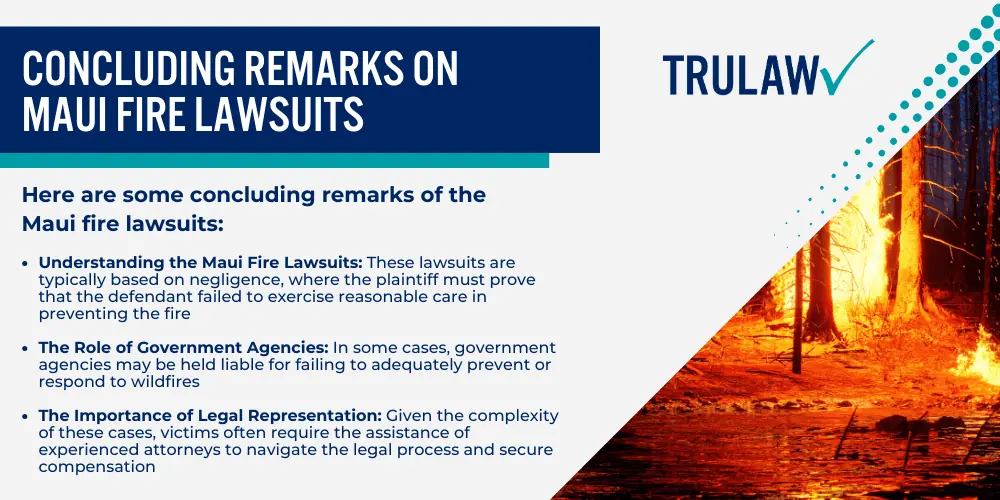
Maui fire lawsuits are legal actions taken by victims of wildfires in Maui, Hawaii, seeking compensation for damages.
These lawsuits often involve complex legal issues and require expert legal representation.
Here are some concluding remarks of the Maui fire lawsuits:
- Understanding the Basis of Maui Fire Lawsuits: These lawsuits are typically based on negligence, where the plaintiff must prove that the defendant failed to exercise reasonable care in preventing the fire.
- The Role of Government Agencies: In some cases, government agencies may be held liable for failing to adequately prevent or respond to wildfires.
- The Importance of Legal Representation: Given the complexity of these cases, victims often require the assistance of experienced attorneys to navigate the legal process and secure compensation.
Maui fire lawsuits are complex legal actions that require a thorough understanding of negligence law and the role of government agencies.
Victims seeking compensation for damages should consider securing expert legal representation to navigate the legal process and advocate for their rights.
Maui Fire Lawsuit Frequently Asked Questions
-
Have any Maui fire settlements been reached yet?
There have not been any Maui fire settlements reached as of now.
The County of Maui has recently filed a lawsuit against Maui Electric Company and other related companies for civil damages caused by the wildfires.
The details of these lawsuits include:
- The lawsuit alleges negligence on the part of the defendants for failing to power down their electrical equipment despite a National Weather Service Red Flag Warning.
- The fires caused significant damage, burning over 3,000 acres, destroying more than 2,200 structures, and resulting in an estimated $5.5 billion in damage.
- The County of Maui is seeking to recover public resource damages and rebuild after the fires.
Details of the Lawsuit
The lawsuit filed by the County of Maui is against Maui Electric Company and other related companies.
The main allegations in the lawsuit are:
- The defendants were negligent in their duty to power down their electrical equipment despite a National Weather Service Red Flag Warning.
- The fires caused significant damage, including burning over 3,000 acres, destroying more than 2,200 structures, and resulting in an estimated $5.5 billion in damage.
Impact of the Maui Wildfires
The fires in Maui had a devastating impact on the local community and environment.
Among the most significant consequences of these fires are:
- Over 3,000 acres of land were burned.
- More than 2,200 structures were destroyed.
- The estimated damage is around $5.5 billion.
What is the County Seeking?
The County of Maui is seeking to recover public resource damages and rebuild after the fires.
Here are the main objectives of the lawsuit:
- The County is seeking to recover public resource damages caused by the fires.
- The lawsuit aims to hold the defendants accountable for their alleged negligence.
- The County is also seeking funds to help rebuild the community and environment after the fires.
The lawsuit filed by the County of Maui is still ongoing and seeks to recover public resource damages and rebuild after the devastating fires.
-
What led to the Maui fire lawsuits?
The Maui fire lawsuits were instigated due to allegations against Hawaiian Electric Company (HECO) for their negligence during the devastating Lahaina wildfires.
The lawsuits claim that HECO failed to shut off power despite high winds and dry conditions, which led to the ignition of the fires.
Here are the key takeaways from the Maui fire lawsuits:
- Negligence by Hawaiian Electric Company: The lawsuits allege that HECO negligently failed to shut off power despite high winds and dry conditions. This negligence is believed to have led to the ignition of the fires, causing widespread devastation.
- Impact on Hawaiian Electric Company: The lawsuits have had a significant impact on HECO, with the company’s market capitalization falling from 4.1 billion to 1.1 billion in the weeks following the fires.
- Multiple Lawsuits: More than a dozen lawsuits have been filed against HECO, including suits from Maui County, Lahaina residents, and some of HECO’s own investors.
Negligence by Hawaiian Electric Company
The lawsuits against HECO stem from the company’s alleged negligence during the Lahaina wildfires.
Key points to note about this negligence include:
- HECO is accused of failing to shut off power despite high winds and dry conditions.
- Sparks from power lines, which were still active, are believed to have ignited the fires.
- The lawsuits claim that the destruction from the fires could have been avoided if HECO had taken essential actions.
Impact on Hawaiian Electric Company
The lawsuits have had a significant impact on HECO, both financially and reputationally.
Here are the key impacts on HECO:
- HECO’s market capitalization has fallen from 4.1 billion to 1.1 billion in the weeks following the fires.
- The company has suspended its quarterly dividend to improve its cash position.
- Analysts have suggested that HECO could face a future liquidity event due to its struggles to bring in external funds and the costs of normal operating expenses.
Multiple Lawsuits
HECO is facing multiple lawsuits in relation to the Lahaina wildfires.
Here are the key details about these lawsuits:
- More than a dozen lawsuits have been filed against HECO.
- These lawsuits include suits from Maui County, Lahaina residents, and some of HECO’s own investors.
- The investors’ lawsuit accuses HECO of fraud, alleging that it failed to disclose that its wildfire prevention and safety measures were inadequate.
The Maui fire lawsuits were instigated due to allegations of negligence by HECO during the Lahaina wildfires.
The company is accused of failing to shut off power despite high winds and dry conditions, leading to the ignition of the fires.
The lawsuits have had a significant impact on HECO, causing a substantial drop in the company’s market capitalization and leading to multiple lawsuits from various parties.
-
Who is liable for the damages caused by the Maui fires?
Hawaiian Electric, along with other electric utilities in the western U.S., is facing lawsuits and potential liability for billions of dollars in damages caused by the Maui fires.
The lawsuits allege that the utilities’ failure to shut off power during extreme weather conditions contributed to the catastrophic wildfires.
However, Hawaiian Electric has rebutted these allegations, stating that its power lines had been de-energized for more than six hours before the devastating “Afternoon Fire” started.
Here are the key takeaways from the ongoing legal battle:
- Hawaiian Electric is facing lawsuits alleging that its failure to shut off power during extreme weather conditions contributed to the Maui fires.
- Hawaiian Electric has rebutted these allegations, stating that its power lines had been de-energized for more than six hours before the devastating “Afternoon Fire” started.
- Hawaiian Electric acknowledged that downed power lines from strong winds were behind a smaller fire that occurred earlier in the day, which was contained and extinguished by the Maui County Fire Department.
Hawaiian Electric’s Response

Hawaiian Electric has declined allegations that its power lines were the cause of the deadly Maui fires.
The company issued a statement saying its power lines had been “de-energized for more than six hours” before the devastating “Afternoon Fire” started.
The company’s stance on the issue is as follows:
- Hawaiian Electric maintains that the cause of the devastating fire has not been determined.
- The company acknowledges that downed power lines from strong winds were behind a smaller fire that occurred earlier in the day, which was contained and extinguished by the Maui County Fire Department.
- Hawaiian Electric has expressed disappointment that Maui County rushed to court before completing its own investigation.
Maui County’s Allegations
Maui County has sued Hawaiian Electric, alleging that the company was negligent for knowing that the high winds predicted days earlier “would topple power poles, knock down power lines, and ignite vegetation.”
The county is seeking compensation for damage to public property and resources in Lahaina as well as nearby Kula.
Liability for the Maui Fires
The question of who is liable for the damages caused by the Maui fires is currently a matter of legal dispute.
While Hawaiian Electric is facing lawsuits alleging its negligence contributed to the fires, the company has rebutted these allegations.
The final determination of liability will likely be decided in court.
-
How does payout information work in such cases?
Potential Maui fire settlements are determined through legal proceedings, where victims seek compensation for damages caused by wildfires.
The process involves proving negligence or using a legal tactic called inverse condemnation, which does not require proving negligence.
The outcome of these claims largely depends on whether the entity being sued, such as Hawaiian Electric, is considered a government agency due to its role in supplying electricity to the public.
The following legal strategies and steps to better understand the intricacies of these proceedings:
- Inverse Condemnation: This legal tactic is used by property owners to seek compensation for damages caused by wildfires. It does not require proving negligence and was successful in securing a $13.5 billion settlement for California fire victims. The outcome depends on whether the entity being sued is considered a government agency due to its role in supplying electricity to the public.
- Negligence Lawsuits: In cases where negligence is alleged, lawsuits are filed against the entity believed to be responsible for the fires. For instance, Maui County sued Hawaiian Electric, alleging that the utility negligently failed to shut off power despite exceptionally high winds and dry conditions, leading to devastating fires.
Inverse Condemnation
Inverse condemnation is a legal tactic used by property owners to seek compensation for damages caused by wildfires.
This strategy does not require proving negligence and was successful in securing a $13.5 billion settlement for California fire victims.
Inverse condemnation lawsuit details include:
- It does not require proving negligence.
- It was successful in securing a $13.5 billion settlement for California fire victims.
- The outcome depends on whether the entity being sued is considered a government agency due to its role in supplying electricity to the public.
Negligence Lawsuits
In cases where negligence is alleged, lawsuits are filed against the entity believed to be responsible for the fires.
For instance, Maui County sued Hawaiian Electric, alleging that the utility negligently failed to shut off power despite exceptionally high winds and dry conditions, leading to devastating fires.
Negligence lawsuit details include:
- They require proving that the entity was negligent in its duties.
- They can result in significant payouts if the lawsuit is successful.
- The outcome depends on the evidence presented and the decision of the court.
Summary of Maui Fire Settlements & Payouts
Potential Maui fire settlements works through legal proceedings where victims seek compensation for damages caused by wildfires.
The process involves either proving negligence or using a legal tactic called inverse condemnation.
The outcome of these claims largely depends on whether the entity being sued is considered a government agency due to its role in supplying electricity to the public.

Managing Attorney & Owner
With over 25 years of legal experience, Jessica Paluch-Hoerman is an Illinois lawyer, a CPA, and a mother of three. She spent the first decade of her career working as an international tax attorney at Deloitte.
In 2009, Jessie co-founded her own law firm with her husband – which has scaled to over 30 employees since its conception.
In 2016, Jessie founded TruLaw, which allows her to collaborate with attorneys and legal experts across the United States on a daily basis. This hypervaluable network of experts is what enables her to share the most reliable, accurate, and up-to-date legal information with our readers!
Additional Maui Fire Lawsuit resources on our website:
Here, at TruLaw, we’re committed to helping victims get the justice they deserve.
Alongside our partner law firms, we have successfully collected over $3 Billion in verdicts and settlements on behalf of injured individuals.
Would you like our help?
At TruLaw, we fiercely combat corporations that endanger individuals’ well-being. If you’ve suffered injuries and believe these well-funded entities should be held accountable, we’re here for you.
With TruLaw, you gain access to successful and seasoned lawyers who maximize your chances of success. Our lawyers invest in you—they do not receive a dime until your lawsuit reaches a successful resolution!
AFFF Lawsuit claims are being filed against manufacturers of aqueous film-forming foam (AFFF), commonly used in firefighting.
Claims allege that companies such as 3M, DuPont, and Tyco Fire Products failed to adequately warn users about the potential dangers of AFFF exposure — including increased risks of various cancers and diseases.
Depo Provera Lawsuit claims are being filed by individuals who allege they developed meningioma (a type of brain tumor) after receiving Depo-Provera birth control injections.
A 2024 study found that women using Depo-Provera for at least 1 year are five times more likely to develop meningioma brain tumors compared to those not using the drug.
Suboxone Tooth Decay Lawsuit claims are being filed against Indivior, the manufacturer of Suboxone, a medication used to treat opioid addiction.
Claims allege that Indivior failed to adequately warn users about the potential dangers of severe tooth decay and dental injuries associated with Suboxone’s sublingual film version.
Social Media Harm Lawsuits are being filed against social media companies for allegedly causing mental health issues in children and teens.
Claims allege that companies like Meta, Google, ByteDance, and Snap designed addictive platforms that led to anxiety, depression, and other mental health issues without adequately warning users or parents.
Transvaginal Mesh Lawsuits are being filed against manufacturers of transvaginal mesh products used to treat pelvic organ prolapse (POP) and stress urinary incontinence (SUI).
Claims allege that companies like Ethicon, C.R. Bard, and Boston Scientific failed to adequately warn about potential dangers — including erosion, pain, and infection.
Bair Hugger Warming Blanket Lawsuits involve claims against 3M — alleging their surgical warming blankets caused severe infections and complications (particularly in hip and knee replacement surgeries).
Plaintiffs claim 3M failed to warn about potential risks — despite knowing about increased risk of deep joint infections since 2011.
Baby Formula NEC Lawsuit claims are being filed against manufacturers of cow’s milk-based baby formula products.
Claims allege that companies like Abbott Laboratories (Similac) and Mead Johnson & Company (Enfamil) failed to warn about the increased risk of necrotizing enterocolitis (NEC) in premature infants.
Here, at TruLaw, we’re committed to helping victims get the justice they deserve.
Alongside our partner law firms, we have successfully collected over $3 Billion in verdicts and settlements on behalf of injured individuals.
Would you like our help?
